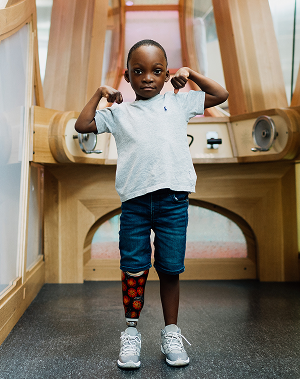muenke syndrome


about condition
Muenke syndrome (MS) is a genetic congenital condition characterized by the premature fusion/closure of certain skull bones, called coronal craniosynostosis. This type of craniosynostosis affects the skull bones along the coronal suture, which is the growth line crossing over the head from ear to ear. However, other areas (sutures) of the skull can also be affected. This in turn affects the shape of the head and facial bones.
symptoms
Symptom severity varies widely among individuals with this condition, even in the same family. A percentage of individuals with Muenke do not have the craniosynostosis hallmark. Furthermore, some family members with the syndrome can even be non-penetrant, which means the individual can have the condition but not have any of the characteristic features. In addition, it has been observed that some individuals with Muenke may have mild malformations of the hands and feet, and there may be sensorineural hearing loss. Most all with this syndrome have typical intelligence but there are some exceptions. As with other craniosynostosis conditions, there can be overlap with features; therefore, genetic testing is recommended to determine the correct craniosynostosis condition. Muenke syndrome was first described by Dr. Maximilian Muenke, a geneticist and CEO of the American College of Medical Genetics and Genomics (ACMG), Maryland.
Characteristics of this syndrome may include:
- Skull bone malformations; premature closure of the coronal suture (coronal craniosynostosis)
- Bilateral usually (brachycephaly; cloverleaf skull shape is possible)
- Unilateral possible (plagiocephaly; facial asymmetry)
- Possible involvement of other sutures
- Misshapen head/facial malformations
- Increased intracranial pressure (rise of pressure inside skull)
- Occasional abnormal fluid accumulation in cavities of the brain (hydrocephalus)
- Eye issues: strabismus, widely spaced eyes, ptosis (upper eyelid is lower than usual), proptosis (protrusion of eye)
- Flattened cheekbones
- Hearing loss: mostly sensorineural loss, followed by conductive or mixed loss
- Presence of a high and narrow palate (roof of mouth is arched)
- Short hands and feet
- Possible developmental delay and learning challenges
- Epilepsy
diagnosis
Surgical intervention may include cranial vault and midface distraction procedures to improve functions early on, as well as other necessary procedures as the child grows.


how do you treat Muenke syndrome?
The treatment of Muenke is focused on the specific symptoms apparent in each individual since the symptoms can vary widely. Several specialties and physicians may be involved throughout the child’s life, such as craniofacial and reconstructive surgeries to correct skull and facial malformations. Patients may see some or all of the following physician specialties: otolaryngologist (ENT), audiologist, neurologist/neurosurgeon, ophthalmologist, dentist and more. Early intervention may be important to ensure that children with this syndrome reach their full potential. Special services such as physical and occupational therapies, along with special education, may be beneficial.
faqs
About Muenke syndrome.
Muenke syndrome affects an estimated 1 in 30,000 to 50,000 newborns. It appears the incidence in females is higher, almost 60 percent. Out of the 60 percent of females affected; 88 percent of those will be affected with craniosynostosis. Males will be affected with craniosynostosis about 76 percent of the time from their group.
Yes, Muenke is a congenital syndrome often apparent at birth. The inheritance is an autosomal dominant pattern, which means the condition has a 50 percent chance of being passed from a positive parent to a child. Some cases of this syndrome are inherited while others are spontaneous new occurrences for the first time in a family.
Even though surgeries may often be in their future, individuals with this condition usually have a typical life span. Factors include early medical management of the craniosynostosis, as well as management of development and behavioral challenges.
Sometimes when an ultrasound is performed during pregnancy, a doctor may notice non-typical signs which require additional testing to reveal more, such as in-depth 2D or 3D ultrasounds or fetal MRI. After birth, clinical examinations and other testing such as CT scans and MRI can help diagnose the syndrome. Since Muenke syndrome is an autosomal dominant condition, if one of the parents has Muenke syndrome and knows their gene-causing mutation location, genetic testing may be performed for the fetus to determine if the baby has a positive result as well. A positive parent has a 50 percent chance of passing it on; therefore, genetic counseling is recommended.
FGFR3/Chromosome 4
Muenke syndrome is caused by genetic changes in the FGFR3 gene. The gene is responsible for providing instructions for the protein involved in the development of bone and brain tissue. When a mutation change occurs, it causes the FGFR3 protein to be overly active. This interferes with normal bone growth and allows the bone of the skull to fuse before it should, which can cause head and facial bone malformations.
- Muenke non-syndromic coronal craniosynostosis
- FGFR3-associated coronal synostosis
- Syndrome of coronal craniosynostosis
- Coronal craniosynostosis
related blogs
here when you need us
Whether you’re looking for the right provider, ready to make an appointment, or need care right now—we’re here to help you take the next step with confidence.

